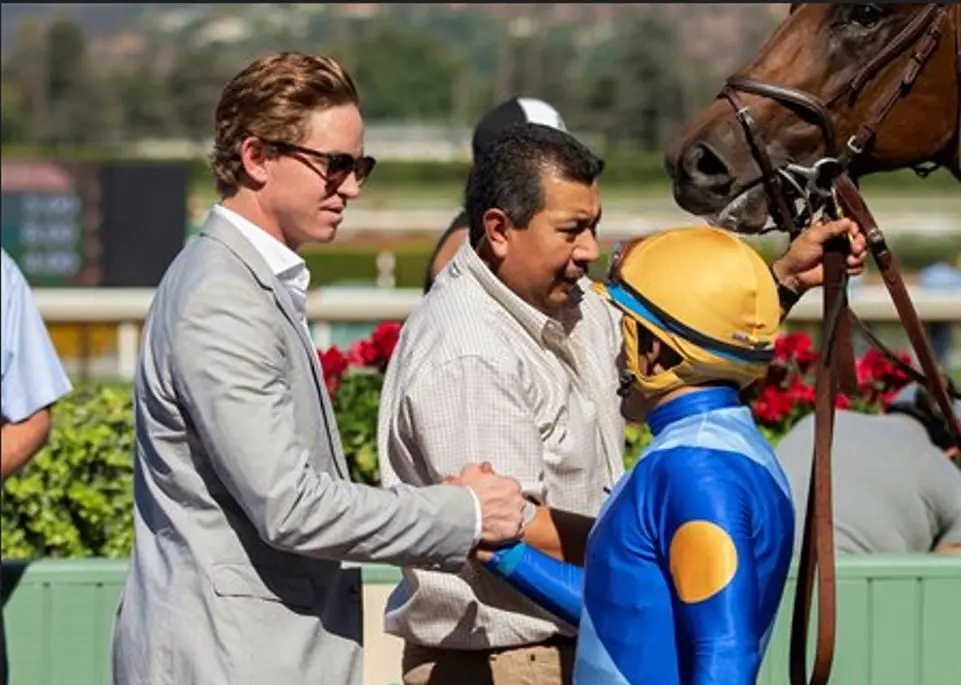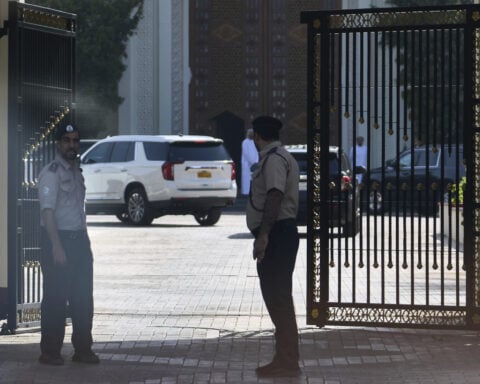Santa Anita Park, a renowned Southern California horse racing venue, has built a reputation for having stringent safety measures to protect its equine athletes. However, recent revelations have raised serious concerns within the horse racing community regarding hypocrisy and favoritism at the track.
The issues center around trainer Dan Blacker, who was cited for a staggering 527 violations by the California Horse Racing Board (CHRB) for failing to schedule veterinary examinations within 72 hours of racehorses' workouts. This violation was uncovered following the tragic breakdown and subsequent euthanization of Blacker's unraced 2-year-old filly, Animae, after a workout. Investigators found that for 789 official workouts, Blacker had failed to secure a veterinary check beforehand 527 times.
Although the CHRB's equine medical director asserted it was impossible to know if veterinary exams could have prevented Animae's fatal breakdown, the sheer volume of violations is alarming. Santa Anita Park is known for actively enforcing even minor infractions to protect horse welfare. Yet despite 527 citations for the same violation, Blacker has faced no apparent sanctions from the track.
This perceived special treatment has sparked heated backlash, given Santa Anita's record of swift, unforgiving penalties for less prolific transgressions. Just last year, the track banned trainer Richard Baltas from entering horses, without waiting for a CHRB ruling. This occurred when a Baltas employee was caught administering an oral supplement too close to race time. But Santa Anita has taken zero disciplinary action against Blacker.
According to Dr. Dionne Benson, chief veterinary officer for Santa Anita's parent Stronach Group, this disparity rests on definitive evidence against Baltas versus mere citations for Blacker. She asserts she cannot intervene amid an ongoing CHRB investigation lacking a "smoking gun." However, many trainers believe Blacker's connections enable preferential treatment.
Fueling this perception is the relationship between Blacker and Aidan Butler, Santa Anita's executive, who both hail from Britain. Moreover, Blacker's wife Christina is an analyst for FanDuel TV's racing coverage. Despite inferences of favoritism, Butler firmly denies ever giving friends special treatment, arguing the opposite is true.
While track officials defend their responses, the glaring lack of enforcement enabling 527 violations reveals concerning regulatory gaps. Pre-workout exams are currently an "honor system" with limited real-time oversight. According to Dr. Blea, the CHRB relies largely on self-policing by trainers, only auditing workouts randomly or following concerning patterns.
With no infrastructure for proactive enforcement, violations can accrue unchecked until an incident prompts investigation. Blea admits enforcement challenges given the CHRB's scarce resources. However, this system failure still allowed a shocking number of undetected violations that may have jeopardized horse safety.
It remains unclear what consequences Blacker may face. First-time offenses generally warrant $100-$1000 fines, far below the impact of 527 citations. The CHRB stewards, who set penalties, have no precedent for a violation tally this massive. While punishment is pending, Santa Anita's inaction speaks volumes to many.
This saga has illuminated several troubling realities. A key safety rule was easily circumvented for an extreme duration due to lack of oversight. Perceptions of preferential treatment, warranted or not, further erode trust in protections for equine athletes. As the situation continues unfolding, the racing community anxiously awaits signals of accountability.
Santa Anita must weigh its commitment to enforcing safety versus any personal allegiances. The CHRB stewards must impose penalties substantial enough to deter such blatant, large-scale violations. And oversight infrastructure must be bolstered to enable proactive enforcement before injuries occur.
This breakdown exposed gaping holes in the safety net meant to protect racehorses. Until fundamental inadequacies underlying this regulatory failure are confronted, horses will remain vulnerable. With stakes this high, half-measures cannot suffice. Santa Anita and the CHRB now face a reckoning to rebuild shattered confidence that horse welfare comes first.

 Trump has begun another trade war. Here's a timeline of how we got here
Trump has begun another trade war. Here's a timeline of how we got here
 Canada's leader laments lost friendship with US in town that sheltered stranded Americans after 9/11
Canada's leader laments lost friendship with US in town that sheltered stranded Americans after 9/11
 Chinese EV giant BYD's fourth-quarter profit leaps 73%
Chinese EV giant BYD's fourth-quarter profit leaps 73%
 You're an American in another land? Prepare to talk about the why and how of Trump 2.0
You're an American in another land? Prepare to talk about the why and how of Trump 2.0
 Chalk talk: Star power, top teams and No. 5 seeds headline the women's March Madness Sweet 16
Chalk talk: Star power, top teams and No. 5 seeds headline the women's March Madness Sweet 16
 Purdue returns to Sweet 16 with 76-62 win over McNeese in March Madness
Purdue returns to Sweet 16 with 76-62 win over McNeese in March Madness








